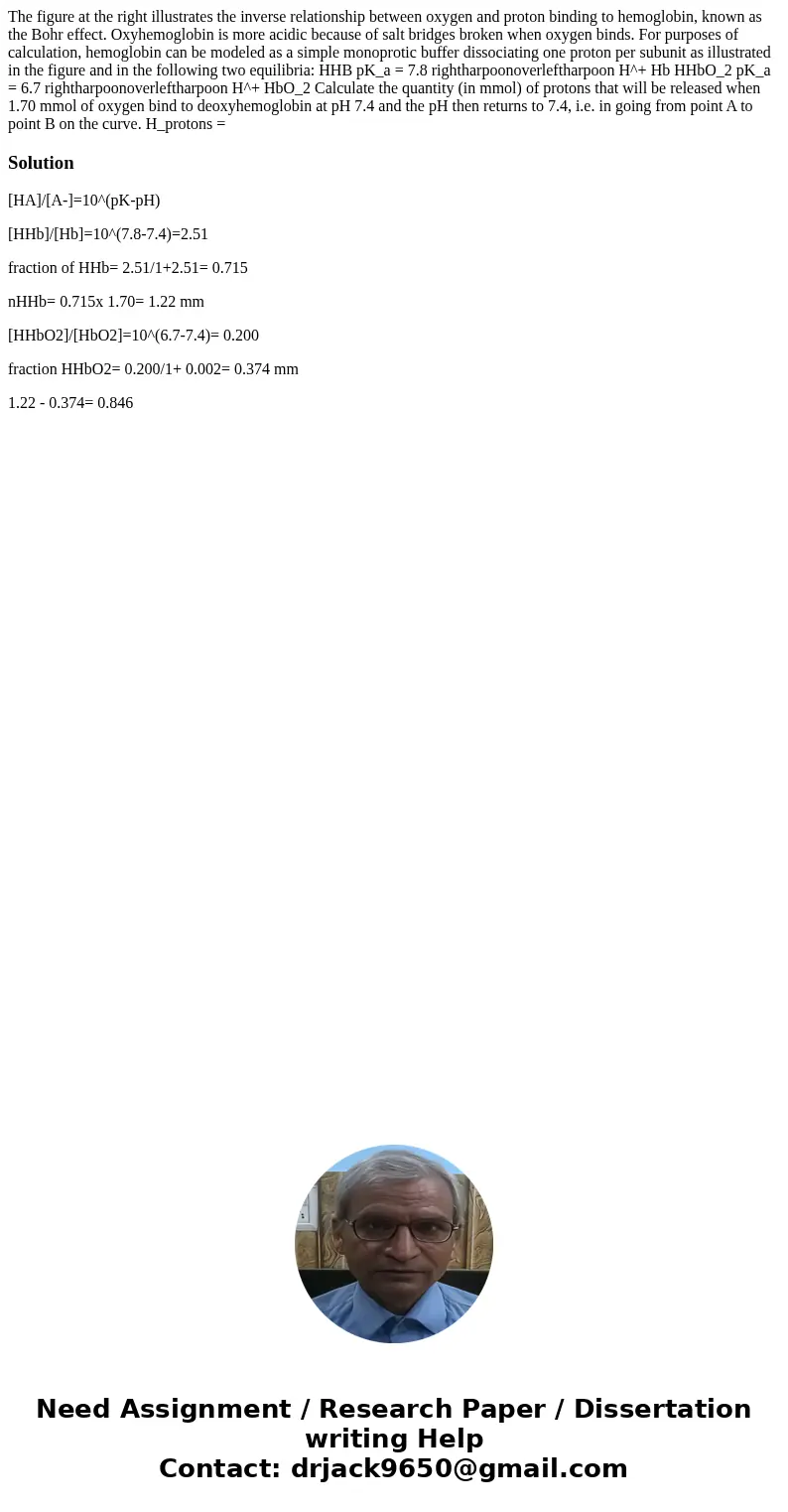The figure at the right illustrates the inverse relationship
The figure at the right illustrates the inverse relationship between oxygen and proton binding to hemoglobin, known as the Bohr effect. Oxyhemoglobin is more acidic because of salt bridges broken when oxygen binds. For purposes of calculation, hemoglobin can be modeled as a simple monoprotic buffer dissociating one proton per subunit as illustrated in the figure and in the following two equilibria: HHB pK_a = 7.8 rightharpoonoverleftharpoon H^+ Hb HHbO_2 pK_a = 6.7 rightharpoonoverleftharpoon H^+ HbO_2 Calculate the quantity (in mmol) of protons that will be released when 1.70 mmol of oxygen bind to deoxyhemoglobin at pH 7.4 and the pH then returns to 7.4, i.e. in going from point A to point B on the curve. H_protons = 
Solution
[HA]/[A-]=10^(pK-pH)
[HHb]/[Hb]=10^(7.8-7.4)=2.51
fraction of HHb= 2.51/1+2.51= 0.715
nHHb= 0.715x 1.70= 1.22 mm
[HHbO2]/[HbO2]=10^(6.7-7.4)= 0.200
fraction HHbO2= 0.200/1+ 0.002= 0.374 mm
1.22 - 0.374= 0.846

 Homework Sourse
Homework Sourse